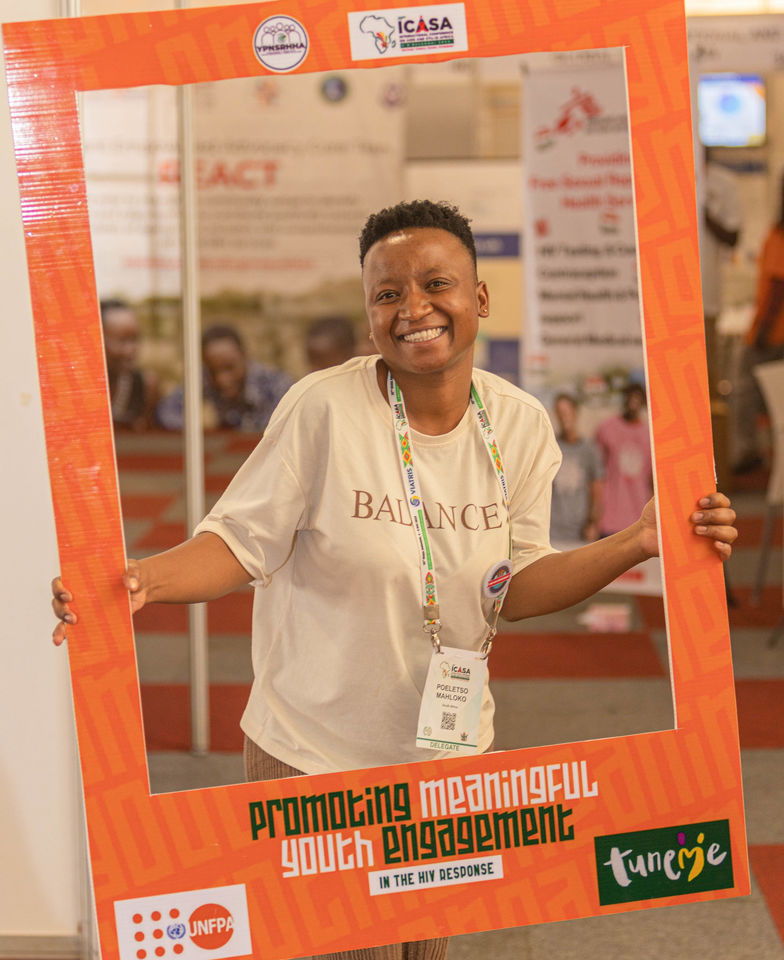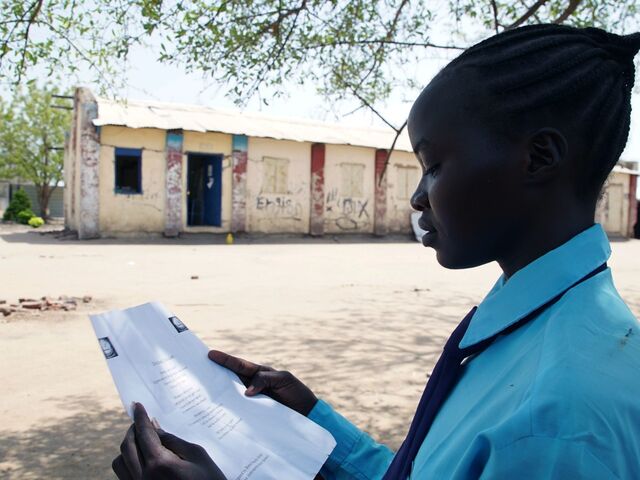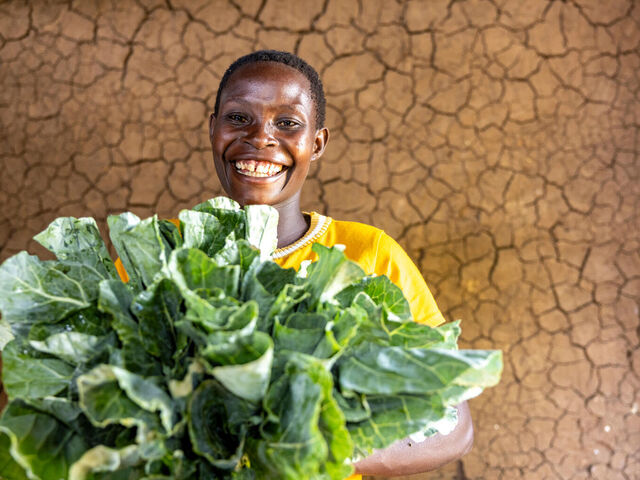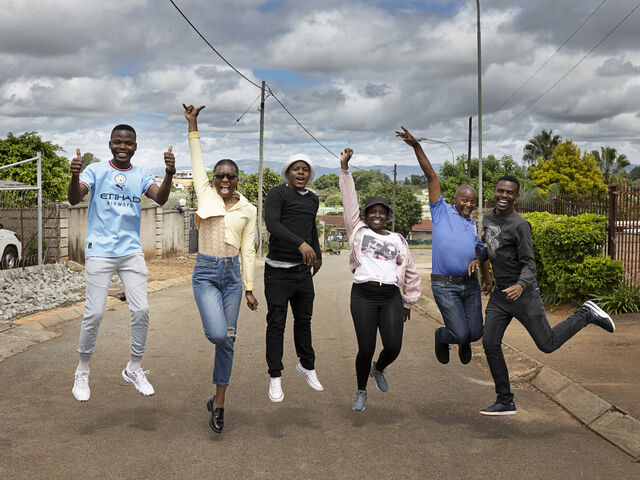Young mothers looking out for each other. Reducing HIV transmission while supporting families to thrive.

Tremendous progress has been made in reversing a global AIDS epidemic which, two decades ago, seemed unstoppable. But two-thirds of the global population of adolescents living with HIV reside in Eastern and Southern Africa. In this region, where 1,200 girls aged 10-19 newly acquired HIV every week in 2022, the crisis is not over yet. In sub-Saharan Africa, HIV incidence among adolescent girls and young women is persistently over three times higher than among their male counterparts.
Adolescence can be a confusing time for any girl and navigating an HIV diagnosis and access to treatment is incredibly stressful. Add to that a pregnancy and it’s easy to see why girls in this age group are so vulnerable to poor mental health outcomes. In Eastern and Southern Africa, 20 per cent of girls become pregnant before the age of 20, representing one of the world’s highest rates of adolescent pregnancy. Although some adolescent pregnancies are planned, at least half are unintended, reflecting a high unmet need for effective contraception.
The demands of parenthood weigh heavily on adolescent mothers, who often have low partner support and are vulnerable to poverty, isolation, dropping out of school, and acquiring HIV. Too often, these challenges become intergenerational and extend to the children of adolescent mothers.
Poeletso, 23, is a peer mentor who supports adolescent and young mothers in Limpopo, South Africa. Having worked as a peer mentor for three years, counselling vulnerable girls, Poeletso is part of a network of young people appointed to health centres and trained to work specifically with adolescent and young mothers, supported by UNICEF.
Poeletso recalls a couple she recently supported. “A 17 year old girl was pregnant, her boyfriend was older. When she came for antenatal care, I encouraged her to test for HIV. Although she was negative, I needed to know her partners’ status, in order to know the baby would be ok. I invited him in for a conversation so I could speak with him directly and explain why he should test. He’s also negative, so we now know the baby is safe from acquiring HIV”.
Through innovative partnerships, UNICEF supports peer-led programmes like the one Poeletso is part of in Limpopo. “These peer-led programmes assist government health services to provide comprehensive sexual reproductive health services including HIV prevention and care, screening and treatment for other sexually transmitted infections, contraceptives, and counselling and clinical support for survivors of sexual violence.”
“Whether their HIV status is positive or not, if young people are at risk, they are encouraged to initiate PrEP, use condoms and practice self-care to protect their mental health. They are referred to clinicians as needed and for other support to address underlying drivers of risk” explains Poeletso.
UNICEF partnered with University of Oxford and University of Cape Town under the 2gether 4 SRHR programme to help ensure the latest evidence of what works is easily and freely available to everyone working in HIV and SRHR.
This brief found that only a third of adolescents living with HIV had started ART before pregnancy and that mental health disorders are highest amongst girls who discover they are both pregnant and HIV positive. The number of adolescent mothers exposed to sexual risk was more than double that of non-mothers, with sexual risk including issues relating to age-disparate sex (any sexual partner more than five years older), transactional sex, multiple sexual partners and not using condoms.
“The best way to support adolescent mothers is to support them to continue school while pregnant, provide formal childcare, and provide youth-friendly clinic services and peer support to strengthen their confidence” says Poeletso. “
“These crucial steps will support adolescent mothers to continue school and progress after giving birth, reduce HIV risk behaviours and strengthen a positive future outlook for both mother and baby’s development”.
There is no magic bullet when it comes to addressing the needs of adolescent mothers living with HIV. But many peer-driven models are demonstrating promising results in improving HIV treatment outcomes and testing uptake, postnatal contraceptive use, attendance of antenatal care, male partner engagement as well as improving mental health of adolescent and young mothers.
The legal environment and society at large must also progress to support vulnerable groups like adolescent mothers. In many countries, at the least restrictive, policies compel girls to leave school until after childbirth; at worst, they deny adolescent mothers any return to school. Through engaging men in maternity care, advocating on education policy, offering cash transfers and grants to support mothers’ income and childcare, adolescent mothers have been found to experience less gender-based violence, stigma and discrimination and are more likely to overcome roadblocks to continuing education and work. These programmes are not only tackling HIV, but every aspect of a young mother’s potential, as well as improving outcomes for her child.
Progress is possible. There has been a 55 per cent decrease in new HIV infections among adolescents between 2010 and 2022. But the rate of decline is slowing. And close to one third of the estimated one million adolescents aged 15–19 years living with HIV in Eastern and Southern Africa were not receiving antiretroviral therapy in 2022. The world may think AIDS is over, but HIV remains the number one cause of death of adolescents in 12 countries in Eastern and Southern Africa and adolescent girls face the greatest risk.
Laurie Gulaid, UNICEF’s Regional HIV advisor said: “UNICEF is proud and committed to work with and for adolescent and young mothers, ensuring their access to services that meet their specific needs, including HIV, SRH and the well-being of their children. Addressing key drivers, including gender inequity, poverty and violence, is critical to ensure that this region benefits from their full potential”.
Poeletso is one of hundreds of young people who have been supported by 2gether 4 SRHR to take up leadership roles in forums where decisions which affect their lives are made.




